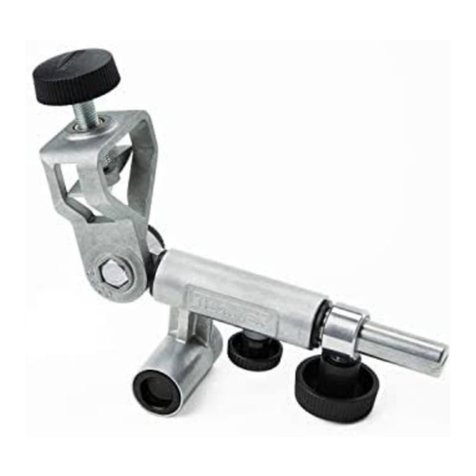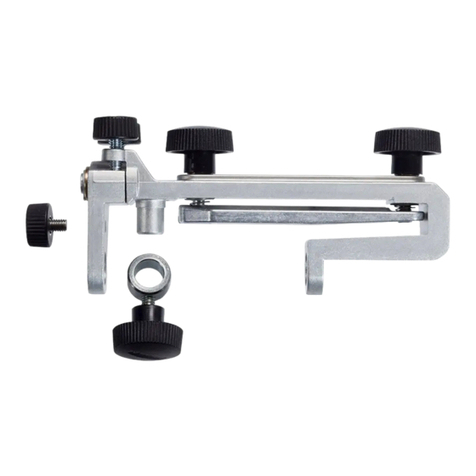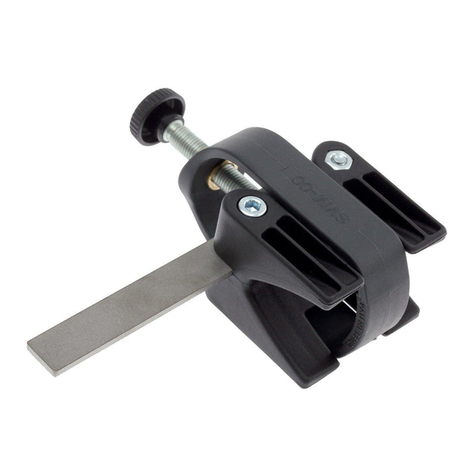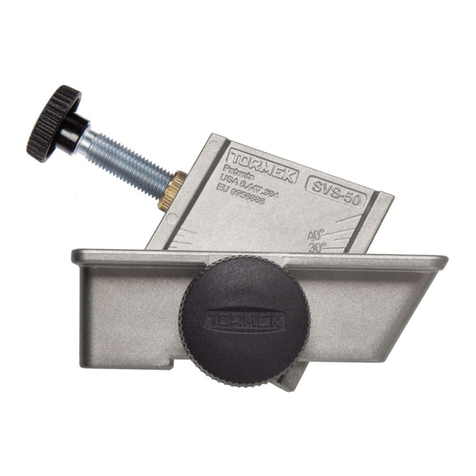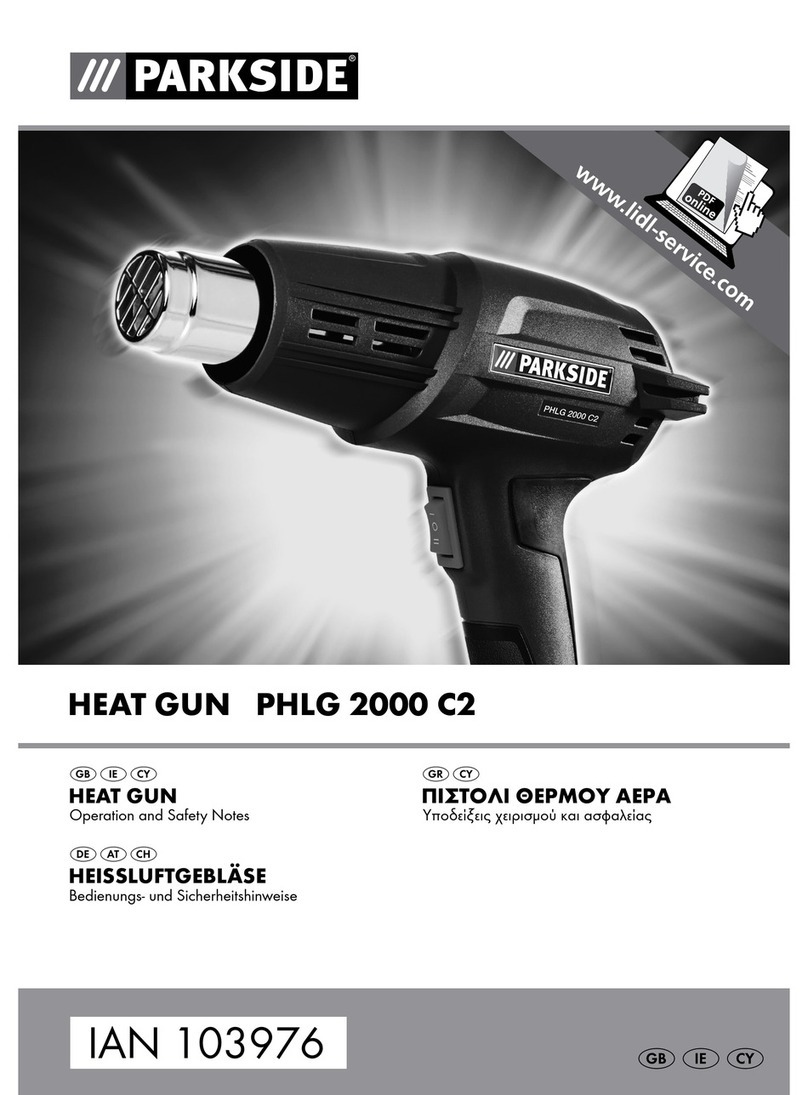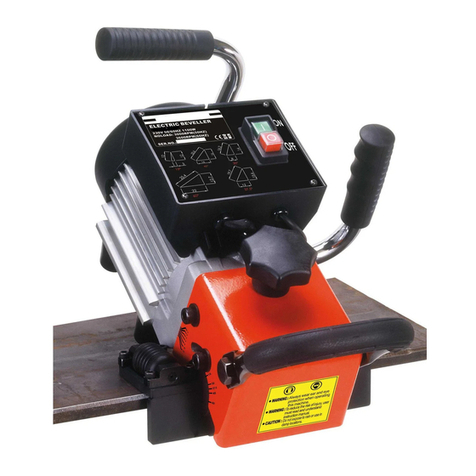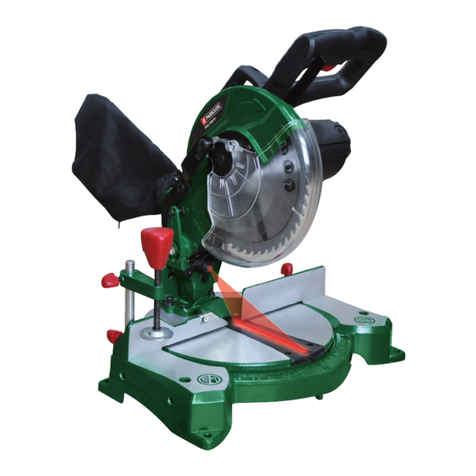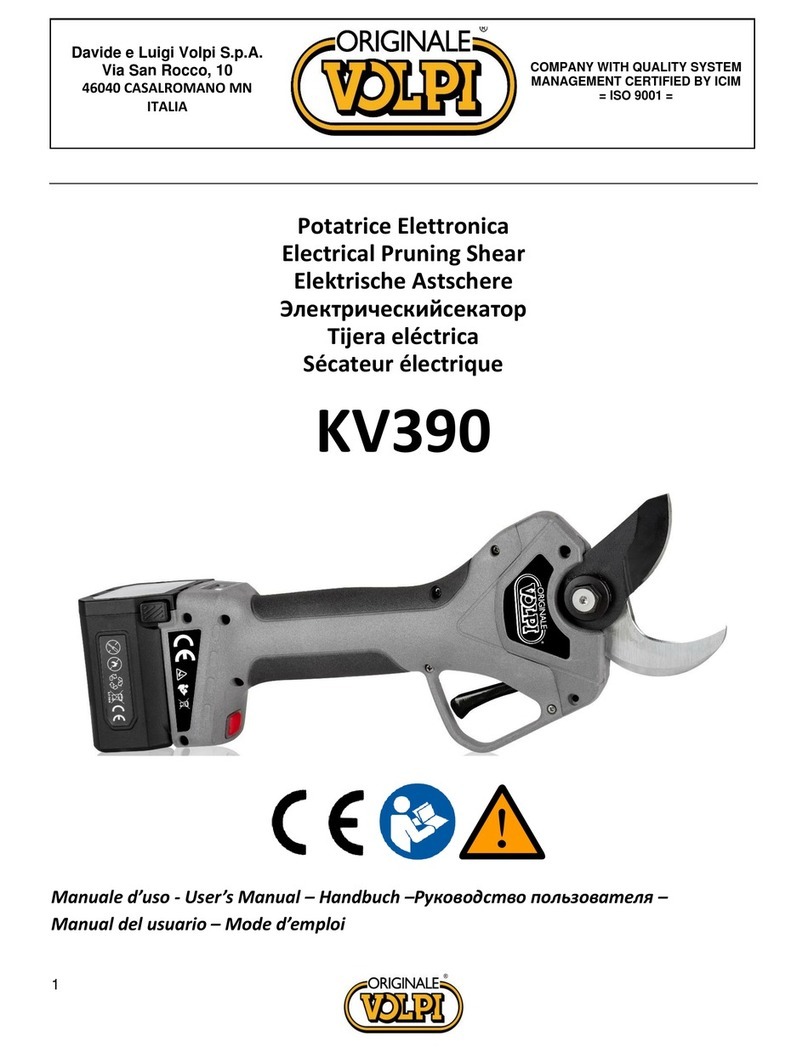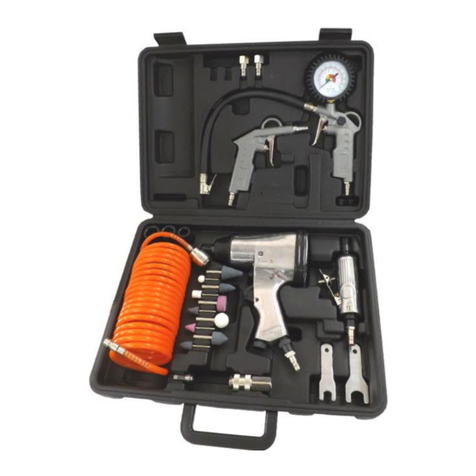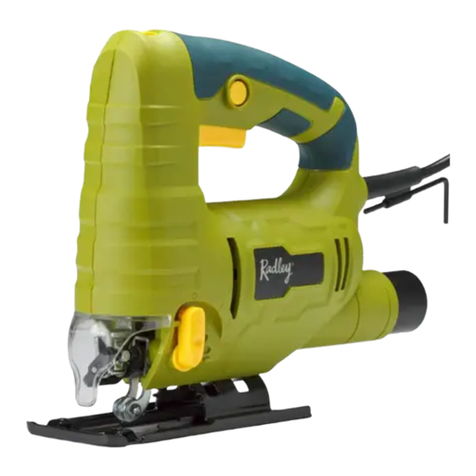tormek SE-76 User manual

120
Square Edge Jig SE-76
Positioning of Machine
Grinding direction:
Towards the edge.
Honing direction:
Away from the edge.
Design
See illustration on the next page. The jig comprises an upper base with a lower clamp and
two locking knobs for xing the tool. The jig slides on the Universal Support on nylon bush-
ings across the grindstone. The edge angle is set with the Micro Adjust (4) on the Universal
Support (5).
There are two safety stops to prevent the tool from slipping off the stone when grinding.
One inner stop (2) to be positioned according to the width of the tool and one outer stop (3)
mounted on the end of the Universal Support.
The jig lines up the chisel to its upper at side, making it easier to mount it correctly (not
twisted). Conventional jigs need manual alignment.
The lower clamp has a ridge in the centre enabling shorter tools with a tapered shank to be
rmly mounted, e.g. Japanese chisels. The upper base, which lines up the tool, is designed
so the clamping pressure is distributed to the ends and the tool mounts rmly without a
heavy tightening of the knobs.
The jig is designed for grinding towards the edge with the Universal Support placed vertically
and for honing away from the edge with the Universal Support placed horizontally.
PLANE IRONS
Max width 76 mm (3")
WOOD CHISELS

121
The jig automatically aligns the
tool to its upper flat side, which
is parallel to the edge.
The clamping pressure from the
ridge in the centre is distributed
to the edges for the firm mount-
ing even of tapered chisels.
Safety stops. These prevent the tool from slipping off the edges
of the stone, which can hurt your fingers. The inner stop (2) is
removed when sharpening blades wider than 60 mm (2
⅜
").
Note The safety stops should be used when sharpening plane irons, since
these are partly moved outside the stone. This is because the tool is wider
than the stone (page 125). The stops are not used for wood chisels since
these are not moved outside the edges of the stone (page 124).

122
Flatten and Hone the Back of the Tools
To achieve a really sharp and durable edge, both of the two converging surfaces must be
smooth. If we sharpen and hone the bevel to perfection but the back is not equally at and
smooth, you will never achieve a satisfactory result. On most new tools, the back has vis-
ible grooves from the manufacturing process. These should be removed and the surface
honed and polished.
Working free-hand, remove the grooves on the side of the grindstone and then hone and
polish the surface on the leather honing wheel. This work only needs to be done once, when
you start using the tool. It is a good investment in your quality tool and will last its lifetime.
Flatten the back of the tool by
holding it flat to the grindstone
while moving it slightly.
Note Keep the tool absolutely flat against the grindstone. Otherwise the tip
cancut into the wheel and be rounded off. Let the side of the tool rest on the
Universal Support which should be placed close to the stone as shown. You
donot need to smooth the tool more than 25–30 mm (1–1¼") from the edge.
Before you start grinding,
check that the stone is true
by letting the Universal
Support touch the stone.
If necessary, true it with
theTruing Tool TT-50 so
thesurface is flat and parallel
tothe Universal Support.
Preparations
Hone the back free-hand.
Holdthe tool so it is a tangent
to the wheel.

123
Colour the bevel with a marker. Turn the grindstone by hand and check where the grinding will take
place. Adjust with the Micro Adjust until the stone touches the entire bevel from the tip to the heel.
Sharpening an existing edge angle
Setting the Edge Angle
The height of the Universal Support determines the edge angle. This can be set in two ways.
Either you can exactly replicate the existing angle using the Marker Method or you set to a
new angle according to your choice using the Tormek AngleMaster WM-200.
Open the clamp to the thickness of the tool and approximately
parallel to the base. Mount the tool protruding (P) approx.
50–75 mm (2–3"). Lock the tool by tightening the knob nearest
to the tool only.
Tools with parallel sides must
rest on the shoulder. For mount-
ing tools without parallel sides,
see page 124.
Mounting the tool
Set the AngleMaster WM-200
to the diameter of your stone.
Set the height of the Universal
Support with the Micro Adjust.
The entire base should rest
on the tool with the corner (a)
on the stone.
Sharpening a new edge angle

124
Sharpening
Japanese Chisels
These differ in shape from the Western style chisels. The
rough shape from the forging is retained without machining,
the sides are usually not parallel and the blades are shorter.
This means that you cannot use the alignment shoulder in
the jig for an exact 90° alignment. The clamp is designed
so tools with a tapered shank can also be rmly mounted
(page 121).
Be cautious when sharpening Japanese chisels! Compared to longer Western style chisels
there is a limited amount of available steel, so you should set carefully to minimize the re-
moval of expensive steel. The back has a hollow, which moves closer to the edge at each
sharpening. After some sharpenings you might need to atten the back, so the hollow does
not reach the edge. Then use the side of the stone.
Draw a pencil line on the
stoneusing the Universal
Support as guide.
Align the tool to the
line when mounting.
Ensure that the hollow does not
reach to the edge. If necessary,
flatten the back on the side of
the grindstone.
Important Bring the tool to the stone carefully when flattening
the back. The edge must not touch the stone before the heel.
Move the tool sideways to use the whole width of the stone.
Donot move more than approx. 2 mm (
4
") outside the stone.
Press with your fingers close to the edge for best control.
Ahigher grinding pressure means faster steel removal. Lighten
the pressure at the end of the sharpening and you will obtain
afiner surface.
Sharpen until a burr develops
on the entire bevel. You can
feel it with your finger.

125
Sharpening a Plane Iron
To get a 100 % straight edge when sharpening wide tools
such as a plane iron, you need to pay attention to a couple
of factors that inuence the result. The grinding jig gives
the tool a constant edge angle towards the stone but the
shape achieved depends on how much pressure you apply
on the right or left side. Also the time you spend sharpening
on each side inuences the shape.
If you press equally on both sides and move the tool evenly across the stone, you will get
a concave and not a straight edge. This is because the middle part is exposed to a longer
sharpening time than the sides. Compensate for this effect by spending more time sharpen-
ing on the sides.
Camber Shape
Most types of plane irons should have a slight convex
shape or a camber. The degree of camber depends on
type of plane and should be approximately the same as
the thickness of the shavings. The camber (c) varies from
0.8 mm (2") for a jack plane down to 0.05 mm (0.002") for
a smooth plane. A scrub plane should have a much larger
camber, which cannot be achieved in the SE-76 jig. Use
the Tool Rest SVD-110. The camber is achieved by press-
ing harder on the sides. A longer protrusion of the blade in the jig will facilitate this effect,
as most plane irons are a bit exible. On a thick, stiff tool you create the camber shape by
spending more time sharpening on the sides.
Setting the safety stops
First mount the inner, movable stop (2) so the tool rests with
approx. 6 mm (¼") on the stone. Then mount the outer stop (3),
which is fixed and independent of the tool width.
Move the tool continuously
between the two stops. Spend
more time sharpening the sides.
Important Like for all Tormek jigs (except for the planer/jointer blade and
moulding knife attachments) you should keep in mind that there is no grind-
ing depth stop. This means that you decide with your hands – pressure and
grinding time – where the grinding takes place. Check the shape frequently
and grind more, where it is needed.

126
Press the fine side of the Stone
Grader onto the stone for about
45 seconds. Use a fair amount
of pressure.
Use the same setting and fine
sharpen for 30–40 seconds.
Donot press too hard.
Finer Surface with the Stone Grader
You can rene the tool surface by grading the grindstone with the ne side of the Tormek
Stone Grader SP-650. Pressing the Stone Grader rmly towards the grindstone renes the
grindstone surface so it acts like a 1000 grit stone. If you are replicating an established edge
angle, you can go directly to this ner surface of the stone.
Honing on the Leather Honing Wheel
Turn the machine around so that the honing wheel rotates away from you. Move the Universal
Support to the honing wheel side and mount horizontally.
The jig gives you full control of the honing angle on the T-7 model. Set to the same honing
angle as the grinding angle. Use the Bevel Marker Method for the setting. Hone the back
without the jig.
The safety stops are not used when honing – they are designed for use on the grindstone.
Therefore, check that you do not slide the jig too far sideways. A part of the blade must
always be in contact with the wheel.
On the T-4 model you use the
Universal Support as a tool
rest. Lock the position with
your index finger.
Colour the bevel. Start honing
on the heel. Adjust until the
colour is removed to the tip.
On the T-7 model you can
beneficially use the jig.
Please note: When using the SE-76 jig with T-3 or T-4,
you must hone without the jig since space is limited.

127
Secondary Bevel?
Some people recommend that you should put a secondary bevel (or microbevel) on your
plane irons and wood chisels. The reason is that the honing work after the grinding is quicker
since you do not need to hone the entire surface of the bevel, just the smaller new bevel
at the tip.
For wood chisels there is a drawback with a secondary bevel since you do not have the
support of the large original bevel to control the cutting in the wood.
Since the grinding and honing of the entire bevel with the Tormek method is an easy and fast
operation, there is no need for a secondary bevel. With a single bevel, you can set exactly
the angle that you want and easily maintain it at every grinding and honing.
Reduced support length
with a secondary bevel
on a wood chisel.
Support length with
a monobevel.
Hone the back free hand. Hold
the tool so that it is at a tangent
to the wheel.
Do not hold the tool at a
steeper angle than the tangent!
The tip will be rounded off.
Edge Angle
Plane irons, wood chisels and spoke shave blades are usu-
ally ground with a 25° edge angle (α).
If you need to work delicate details with a wood chisel in
soft wood, you can decrease the edge angle down to 20°.
If you work in hard wood and when using a mallet, you must
increase the edge angle to 30°.
Table of contents
Other tormek Power Tools manuals
Popular Power Tools manuals by other brands
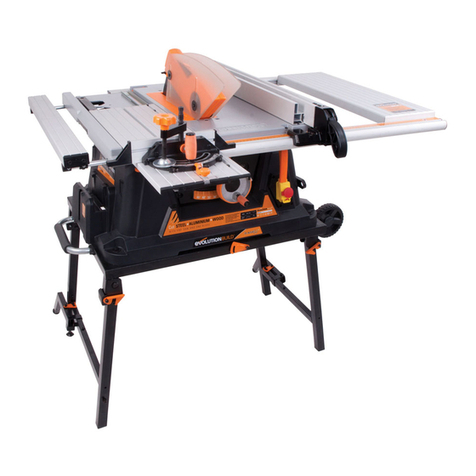
Evolution
Evolution RAGE 5 Original instructions

80% Arms
80% Arms FST-1 Operator's manual
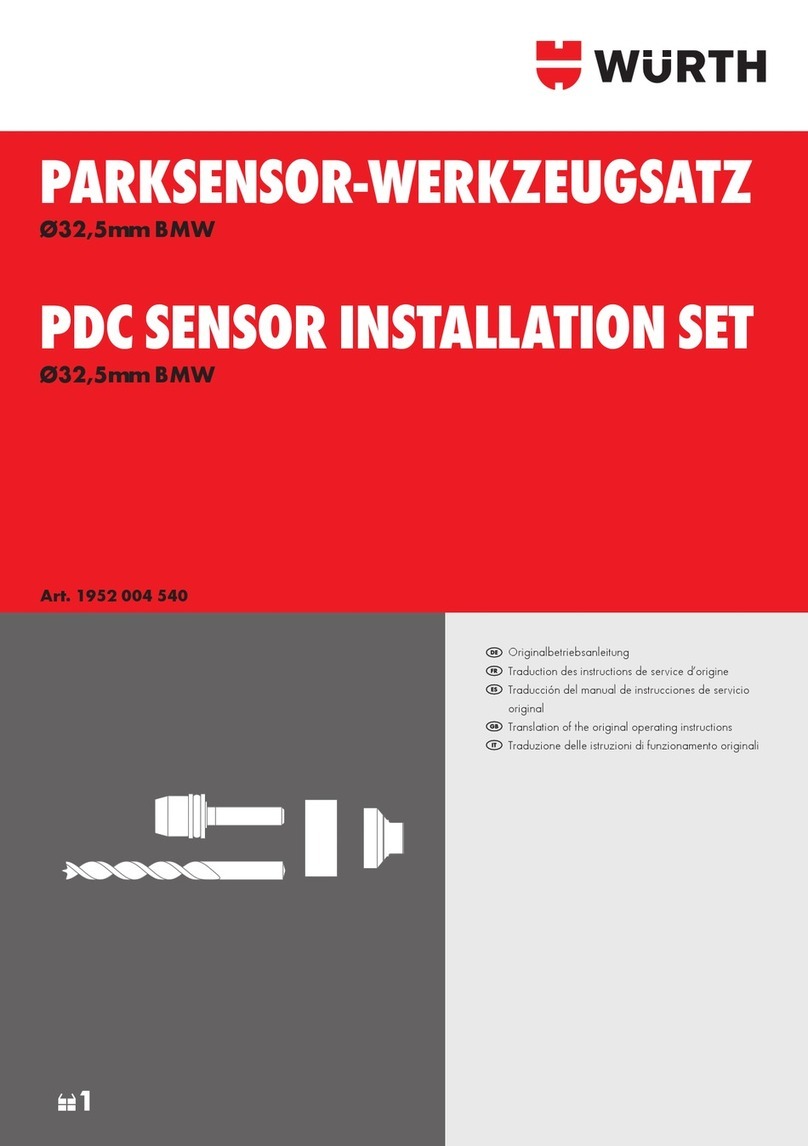
Würth
Würth 1952 004 540 Translation of the original operating instructions

Schmidt
Schmidt ServoPress 605-660 Translation of the original assembly instruction

HIKOKI
HIKOKI WR36DE Handling instructions
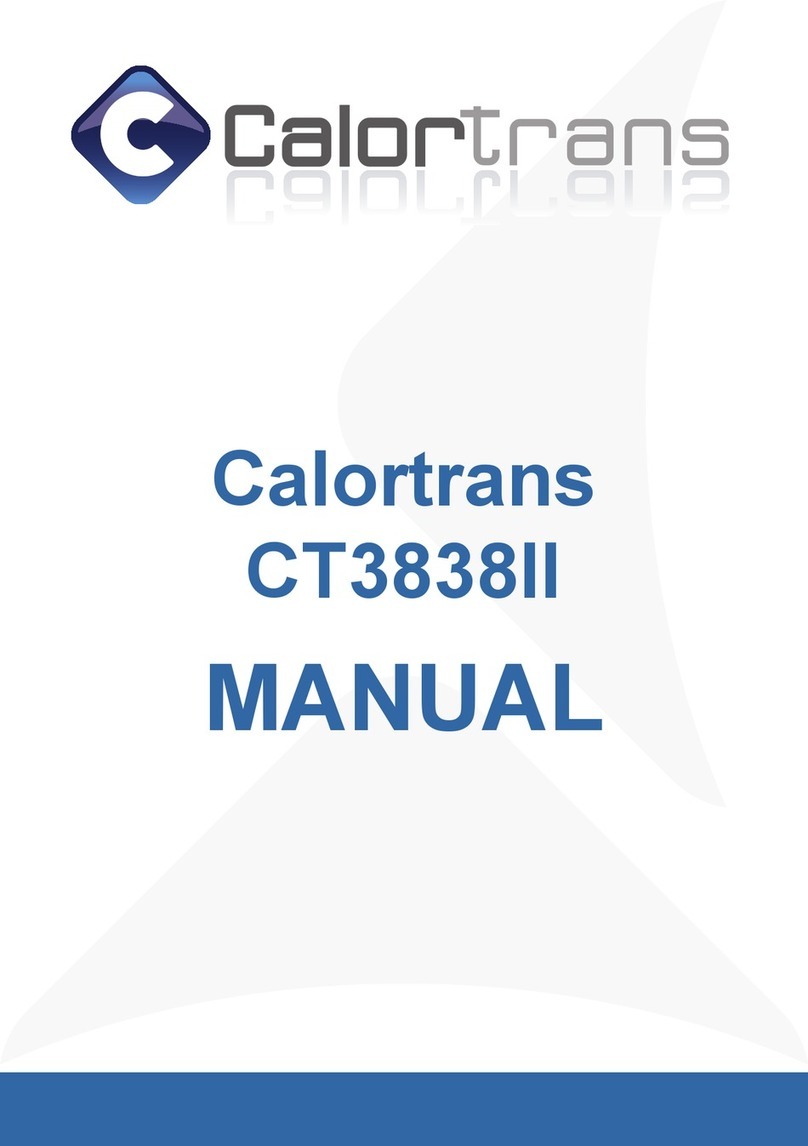
Calortrans
Calortrans CT3838II manual
